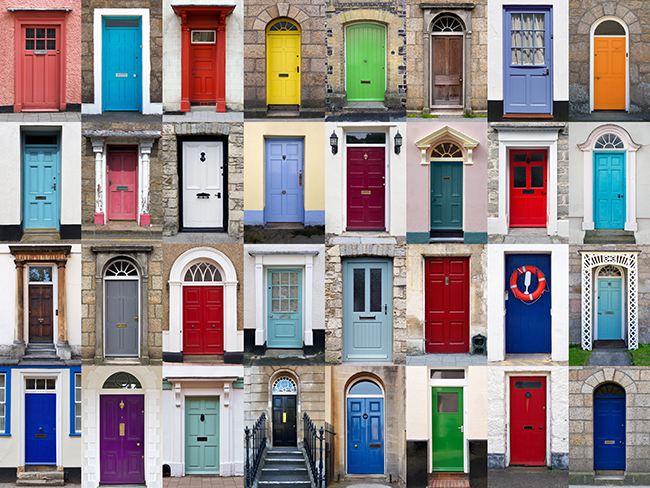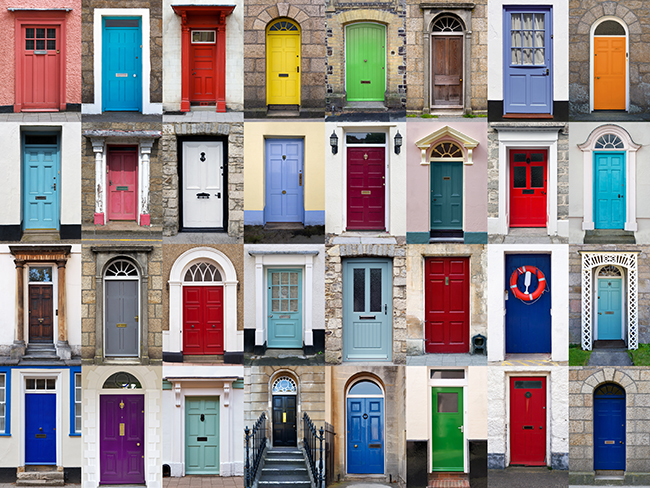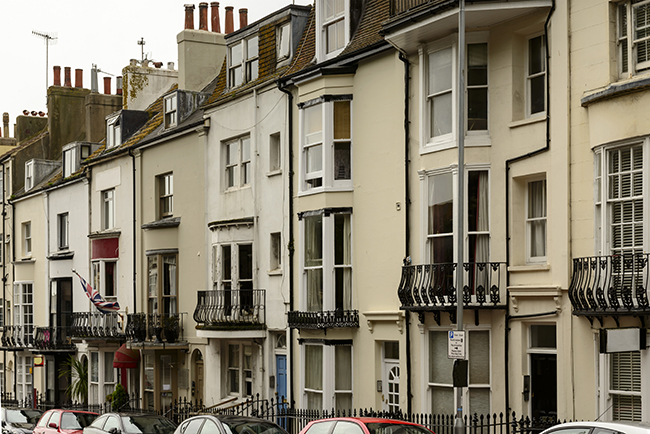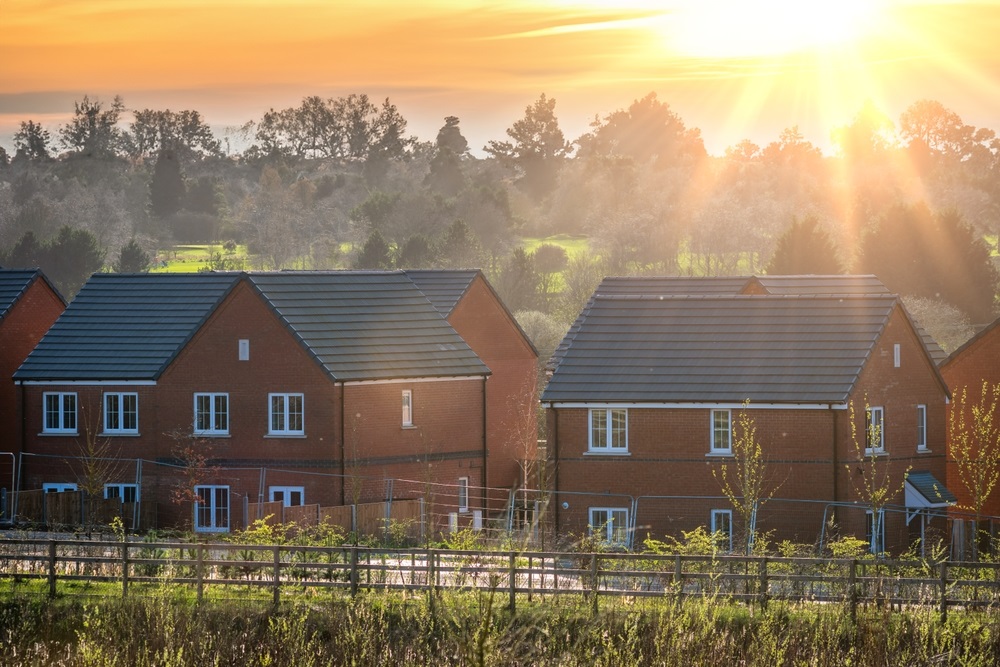In a plan mirroring Margaret Thatcher’s sale of council homes in the 1980s, the government has extended Right to Buy to housing association tenants. However, the scheme has come under fire from property experts who believe it will do little to tackle the housing crisis. Stephen Little investigates Right to Buy was introduced by the […]
 In a plan mirroring Margaret Thatcher’s sale of council homes in the 1980s, the government has extended Right to Buy to housing association tenants. However, the scheme has come under fire from property experts who believe it will do little to tackle the housing crisis. Stephen Little investigates
In a plan mirroring Margaret Thatcher’s sale of council homes in the 1980s, the government has extended Right to Buy to housing association tenants. However, the scheme has come under fire from property experts who believe it will do little to tackle the housing crisis. Stephen Little investigates
Right to Buy was introduced by the Conservative Government in the 1980s to allow council house tenants to purchase their homes at a discount.
One of the flagship policies of the Thatcher era, it was seen as a way of giving aspirational working class council tenants the opportunity to get a foot on the housing ladder and improve social mobility.
As part of a drive to boost home ownership in 2012, David Cameron unveiled plans to revive Right to Buy by increasing the discounts on offer to tenants by as much as three times.
Under the scheme, 1.9 million council homes have been sold in England during the past 30 years, around one-third of the stock.
Right to Buy has not been viewed as such as success in Scotland and Wales though, which have both recently scrapped the scheme after it was blamed for leading to a shortage of housing in the social rental sector.
The government has now pledged to extend Right to Buy for housing association tenants, which has come in for some fierce criticism.
Despite the government promising to replace each home sold with another affordable property, there are fears councils won’t be able to keep up. A second pilot scheme was recently announced and a full roll-out does not look likely until 2018.
Right to Buy extension
The Conservatives announced plans in 2015 to extend the Right to Buy scheme, giving 1.3 million housing association tenants the opportunity to buy their home at a discount. Housing associations offered to voluntarily sign up to the deal with Ggvernment to make this a reality.
The government then launched a pilot offering housing association tenants discounts of up to £100,000 in London and £70,000 elsewhere.
It intends to fund the Right to Buy discounts for housing association tenants with the proceeds from the sale of high value council homes.
To qualify for the pilot, tenants were required to have lived in their property for at least 10 years, far longer than the three years for the council Right to Buy scheme.
However, Voluntary Right to Buy appears to have hit a few snags. Chancellor Philip Hammond announced another regional pilot in last year’s Autumn Statement and the roll-out now looks like it will not take place until April 2018 at the earliest.
The new pilot will also test the one-for-one replacement of homes and portability of discounts.
The National Housing Federation, which represents all the UK’s housing associations, said it was committed to working with government to make Voluntary Right to Buy a success.
James Prestwich, head of policy at the National Housing Federation, said: “It makes homeownership more achievable for a larger number of people and will enable housing association tenants to have a larger discount to purchase their home.
“Under the terms of the agreement housing associations have committed to deliver one-for-one replacements, so for every home sold through Voluntary Right to Buy a new one will be built.”
[box style=”4″]
Right to Buy for council tenants
Under the current system you can get a discount on the market value of your home when you buy it of up £77,900 across England, and £103,900 in London.
To be eligible you must have been living in a council house or flat for at least three years, but it does not matter if you have moved around a lot as it does not have to be continuous.
You can apply along with someone who shares a tenancy with you or with three family members that have lived with you over the past 12 months.
You should note that if you choose to sell in the first five years you will have to pay back the discount and any share of the profit.
Has it been successful?
Despite the success of the scheme in getting people on the housing ladder, critics argue that selling off publicly-owned housing stock leaves the system depleted.
John Bibby, senior policy officer at housing charity Shelter, commented: “While Right to Buy has helped people who wouldn’t otherwise have been able to afford to buy, the overwhelming majority of homes sold have not been replaced.
“This has hugely reduced the amount of social housing and played a massive part in the current drought of genuinely affordable homes across the country.”
The Local Government Association has warned that the Right to Buy scheme needs urgent reform to ensure councils are able to replace properties sold to tenants.
The organisation has called for tenant discounts to be set so they reflect local house prices and for councils to retain 100% of receipts from the sale of council homes so new ones can be built.
It also wants the sale of high value council homes to become voluntary and the government to work with councils to build more homes on surplus public land.
Councillor Nick Forbes, senior vice chair of the Local Government Association, said Right to Buy would quickly become a thing of the past in England if councils continue to be prevented from building new homes.
He said: “Housing reforms that reduce rents and force councils to sell homes will make building new properties and replacing those sold even more difficult. Such a loss in social housing risks pushing more people into the more expensive private rented sector, increasing homelessness and housing benefit spending.
“Councils in England believe this policy can be made to work if they are able to build the replacements that protect essential local housing, and ensure future generations can also benefit from the scheme.
“If we are to stand a real chance of solving our housing crisis, councils need the funding and powers to replace any homes sold under Right to Buy quickly and reinvest in building more of the genuine affordable homes our communities desperately need.”
Another problem of the Right to Buy scheme is that a huge number of homes have been bought up by landlords.
According to a report published in 2014, 36% of homes sold under Right to Buy in London have ended up in the hands of private landlords. This has led to a situation with councils renting back properties that they were made to sell at a discount to house homeless families.
[/box]
Funding
Perhaps the most controversial aspect of the Right to Buy extension is that the government will force local councils to sell off high value council homes in order to fund the discounts for buyers.
Last year, MPs on the Communities and Local Government Committee described the funding of the scheme in this way as “extremely questionable” and said the money should come from central government rather than through a levy on local authorities.
The committee warned selling social housing at a discount could lower the quality of homes in the private rented sector and raise prices.
It said that large numbers of homes sold through the current Right to Buy scheme had quickly gone on the rental market and recommended restrictions on housing association properties being rented in the private sector.
John Bibby, senior policy officer at housing charity Shelter, said: “The danger with selling off houses to the highest bidder in areas where there is already likely to be a chronic shortage of affordable homes is that the people who need those homes most will inevitably miss out.
“This would leave many more people with no choice but expensive, unstable private renting, and as the loss of a private tenancy is the single biggest cause of homelessness, this is a huge concern.”
Council and housing association homes are sought after by millions of families. Critics argue that by selling them through Right to Buy reduces affordable housing stock in inner cities and deprives those who are most in need of subsidised housing.
While the government has pledged to replace every home sold, commentators have pointed out that the record of building new social housing under the original scheme has been pretty poor – only one in 10 of the 23,000 council homes sold since 2012 has been replaced.
There are also concerns extending Right to Buy could make it increasingly difficult for housing associations to build more social housing.
Housing associations are more reliant than ever on raising their own money to build houses following government cuts. However, the government has also decided to reduce social rents, meaning that housing associations have less income.
Bibby said: “The proposal to force councils to sell off some of the few genuinely affordable homes they have left is the most worrying element of the scheme.
“The government has already cut social rents, and while this is good news for social tenants it means that housing associations’ incomes have also dropped. Many housing associations are concerned this will affect their capacity to build new homes, and we’re worried this could subsequently mean fewer homes sold will be replaced.”
Rural areas
There are also worries that Right to Buy will accelerate the housing crisis in rural areas.
Critics argue that Right to Buy homes that are resold on the open market at prices above what people in the local community can afford could reduce the availability of affordable housing and potentially force out families and young workers.
This has led to calls for rural areas to be made exempt from the Right to Buy extension.
Prestwich said that housing association tenants who live in rural areas would receive a Right to Buy discount elsewhere in the country.
He said: “It will be for housing association boards to determine which properties within their stock fall within the scope of Right to Buy and which properties aren’t included.
“We are working with the government to look at the option for tenants who are in homes where they can’t purchase the property to be able to have a portable discount so they may be able to buy a similar property within the housing association stock or a partner housing association.”
[box style=”4″]
Case study: Buying your council property with Right to Buy
Jason Adams decided to purchase his council property in Brighton after living there for 11 years.
He approached the local council to confirm that he was eligible and was offered a discount of £72,000 on the market value of £150,000, which meant that he required funding of £78,000 to buy his one bedroom flat.
Jason is a self-employed builder and as his property would be regarded as non-standard by many mainstream lenders, his mortgage broker recommended specialist Right to Buy lender Together.
Together instructed a valuation report using its panel of surveyors to confirm the market value and carried out an affordability assessment, reviewing income and expenditure.
The funding was agreed at a rate of 6.69% over 25 years and was delivered within just 16 working days of the offer being sent.
In fact, the monthly payment on the mortgage turned out to be just under a third more than his previous monthly rental payment.
Jason says: “I’ve lived in my flat for over 10 years and thanks to Right to Buy I’m now a homeowner rather than a tenant. My mortgage is only slightly more than my rent was previously but I know at the end of it, I’ll own my property and that gives me security and peace of mind.
“The process with Together was smooth and flexible. For example, when I made a change to the term requested, it was not an issue and a new offer was sent out. The information was clear and the money came through within about two weeks after that. It was helpful that they were specialists in Right to Buy as they were used to dealing with councils and understood the whole process.
“For me, Right to Buy has changed my life. There’s no way I could have got on the property ladder otherwise as I don’t have savings for a deposit.”
[/box]
Getting a mortgage
While you don’t need to take out a Right to Buy mortgage, lots of lenders do offer products that are specifically tailored for those looking to buy their council property.
One of the biggest advantages of the Right to Buy scheme is that as you don’t have to save for a deposit, many lenders will allow you to use the discount instead.
Before getting a mortgage you must first contact your local authority to find out if you qualify and confirm the level of discount that may apply.
David Hollingworth, associate director at London & Country Mortgages, said: “In terms of the basic process it is very much the same as any other mortgage application.
“It’s important for the borrower to understand the terms and there will generally be a period, typically five years, during which the discount or a proportion of it will be repayable if the property is sold.”
Some tenants that have less than perfect credit histories or an unusual property type might have problems getting a mortgage from a traditional high street lender.
It can be more difficult to get a mortgage on an ex-local authority or housing association property. Banks and building societies are often reluctant to lend to borrowers if the property is in a tower block above the fourth floor as they are less popular with buyers.
Tenants can also struggle to get a mortgage if less than half the flats in their block are privately owned; or if they are made of concrete and prone to crumbling.
Specialist lenders such as Together look more favourably on those with poor credit histories or non-standard constructions by considering individual circumstances, not just a borrower’s credit profile.
Pete Ball, chief executive of retail at Together, said: “The type of property can limit the availability of mortgages. From what we have seen, 55% of Right to Buy customers are in non-standard property that could potentially be excluded by mainstream lenders. We consider all property types and will lend to people living in high rise flats.
“We have factored the discounts into the application process and that allows us to fund up to 100% of the property value, so people can get a mortgage with a smaller deposit.
“We offer both variable and fixed rates that start from 6.37%. We don’t just look at the credit profile, we talk to every applicant about their individual circumstances and guide them through the process.”
Roll-out
Figures suggest the housing association pilot has not been a resounding success. According to the National Housing Federation, just 790 applications were made to use the scheme out of the 48,000 tenants that qualified.
Despite the problems, the government says it remains firmly committed to rolling out Voluntary Right to Buy for housing association tenants.
A Department for Communities and Local Government spokesperson said: “The existing pilot provided the opportunity to fully develop and test the application process and sales procedures. This information is invaluable in designing the national scheme.
“We want to make sure that the Voluntary Right to Buy scheme works effectively and fairly for tenants and housing associations. We have already undertaken a small pilot to test the scheme and how it works, and this has already helped families to move into homeownership in the communities in which they live. The expanded pilot will allow us to test further key aspects of the scheme.
“We are using the pilots to ensure that we get this scheme right – allowing us to test key features of the policy.”
However, Jeremy Leaf, north London estate agent and a former RICS residential chairman, said the announcement in the Autumn Statement of a new regional pilot signalled Right to Buy was being kicked “into the long grass”.
“It was a manifesto commitment to roll it out across the country but the government isn’t going to do that now because it is nervous about the cost.”
Shelter said the government needed to find another way to pay for the extension and come up with a credible plan to replace homes on a like-for-like basis.
Bibby said: “Without any guarantee that the homes sold will be replaced we think it should be scrapped. If the government wants to extend Right to Buy for housing association tenants it should find another way to pay for it. If housing associations are not in a position to replace homes, then clearly the government needs to consider whether this is the right time to extend the scheme.
“Our research suggests the forced sale of council homes could make things significantly worse, particularly in places where there is already a shortage of affordable property.
“Of course helping social renters to buy their own home isn’t a bad thing, but without like-for-like replacement every home sold off through Right to Buy is yet another dent on our already dwindling supply of affordable homes.
“The delay of the roll-out means the government has more time to think through some of the challenges and how they might be addressed.”
Prestwich said: “It’s a complex policy and there will always be hurdles to overcome. Clearly the most important thing is that the government provides certainty on how it will fund the scheme as well as details of when the main scheme will go live.”
















